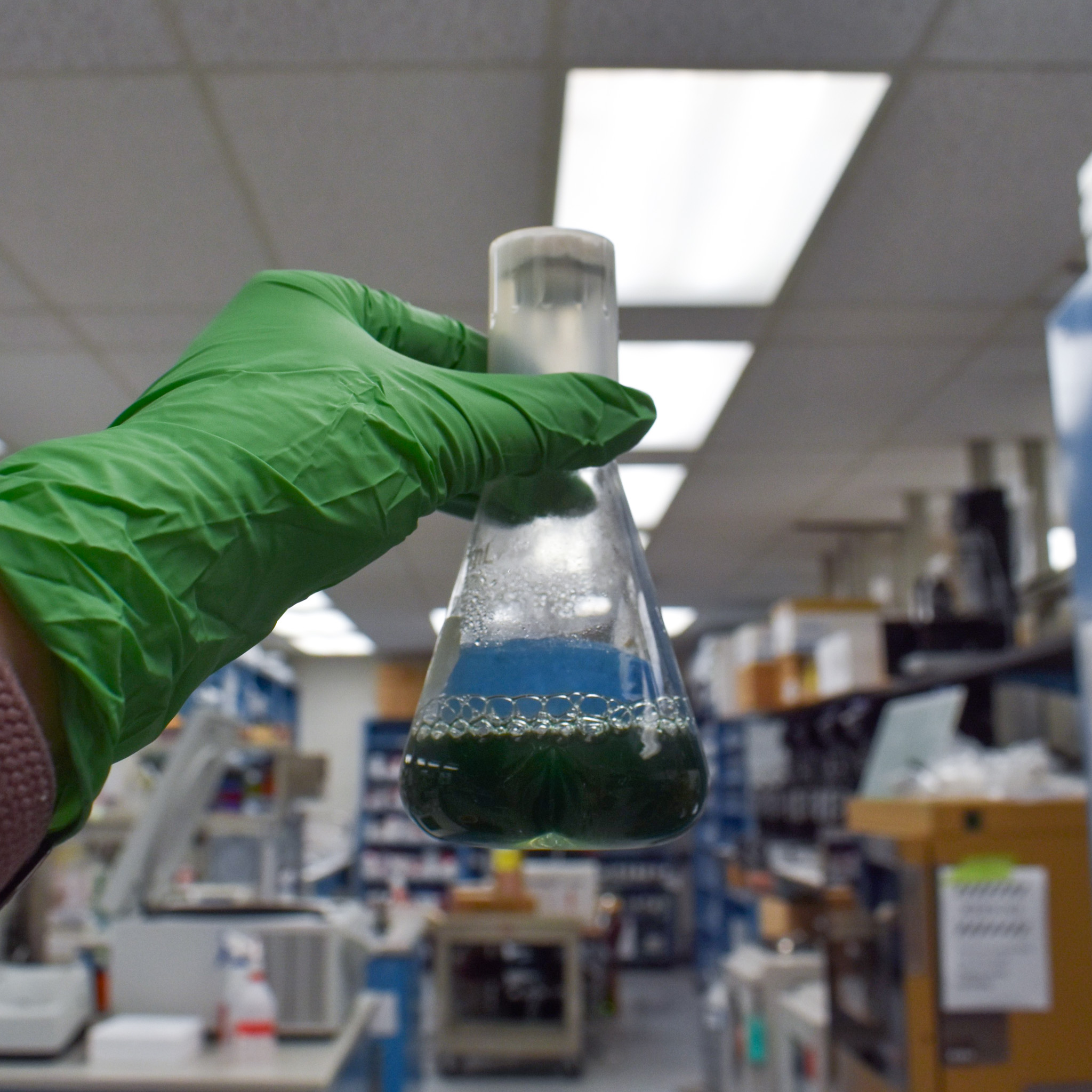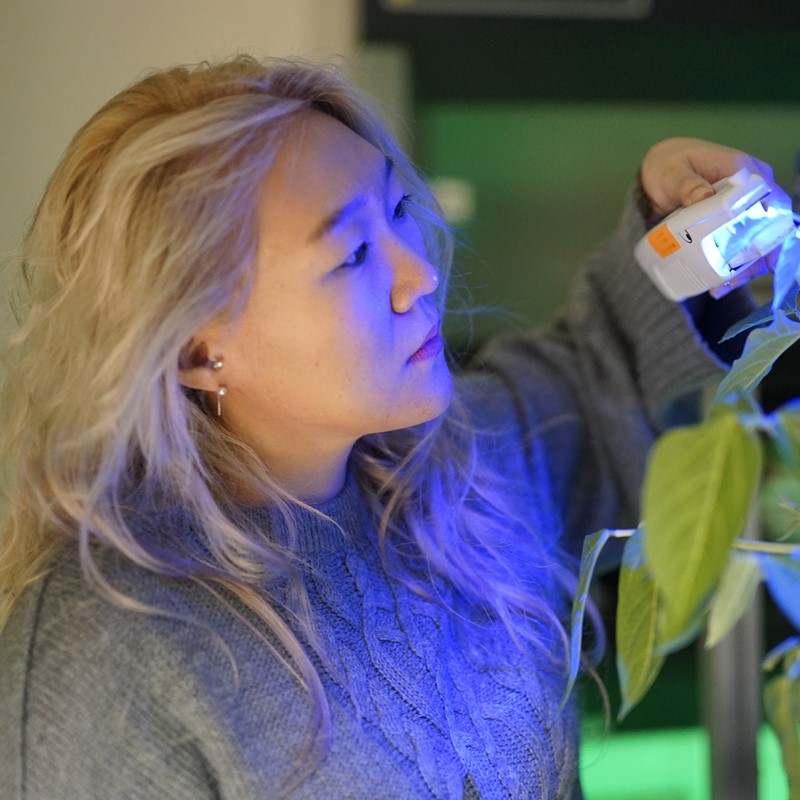Heterologous bioproduction pathways enhance cyanobacterial photosynthesis and photoprotection
Two metabolic pathways introduced into cyanobacteria increase its photosynthesis performance and provide partial protection from negative effects of excess light absorption.

Scientific Achievement
Two exogenous metabolic pathways were introduced into cyanobacteria and were shown to increase its photosynthetic performance. These pathways seem to partially protect the cyanobacteria from negative effects of excess light absorption.
Significance and Impact
Cyanobacterial biotechnological applications (e.g., biofuel production) require increased productivity to be economically competitive with current production methods. Maximizing cyanobacterial photosynthetic efficiency is a grand challenge that is therefore tied to the economic viability of sustainable bioproduction.
Research Details
- This research serves as additional evidence that engineering “metabolic sinks” can improve photosynthetic capacity and photoprotection in cyanobacteria.
- The research team utilized Synechococcus elongatus PCC 7942 to rewire electron flux away from endogenous energy dissipation mechanisms (flavodiiron proteins), and towards heterologous metabolic sinks (sucrose production; and cytochrome P450, able to degrade the herbicide atrazine). These dissipation mechanisms compete with photochemistry, inherently reducing photosynthetic efficiency, and the energy that they consume can be effectively converted into useful metabolic products via heterologous pathways.
- Activation of both heterologous pathways had beneficial effects on photosynthesis, albeit with distinctions as to the specific improvements observed. Sucrose export was associated with improved quantum yield of PSII and enhanced electron transport chain flux at low light, while cytochrome P450 activity led to photosynthetic enhancements primarily observed under high light.
- Co-expression of both metabolic sinks showed additive impacts on photosynthesis, indicating that neither sink alone could utilize the full “overcapacity” of the electron transport chain.
- Furthermore, when both metabolic sinks were activated, a photoprotective effect was observed. Metabolic sinks could partially protect photosystem I in the absence of native photoprotection proteins.
Related people: María Santos-Merino, Alejandro Torrado, Geoffry A. Davis, Annika Röttig, Thomas S. Bibby, David M. Kramer, and Daniel C. Ducat (CA)
This work was primarily funded by the US Department of Energy, Office of Basic Energy Sciences.



